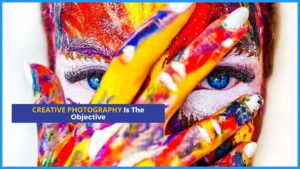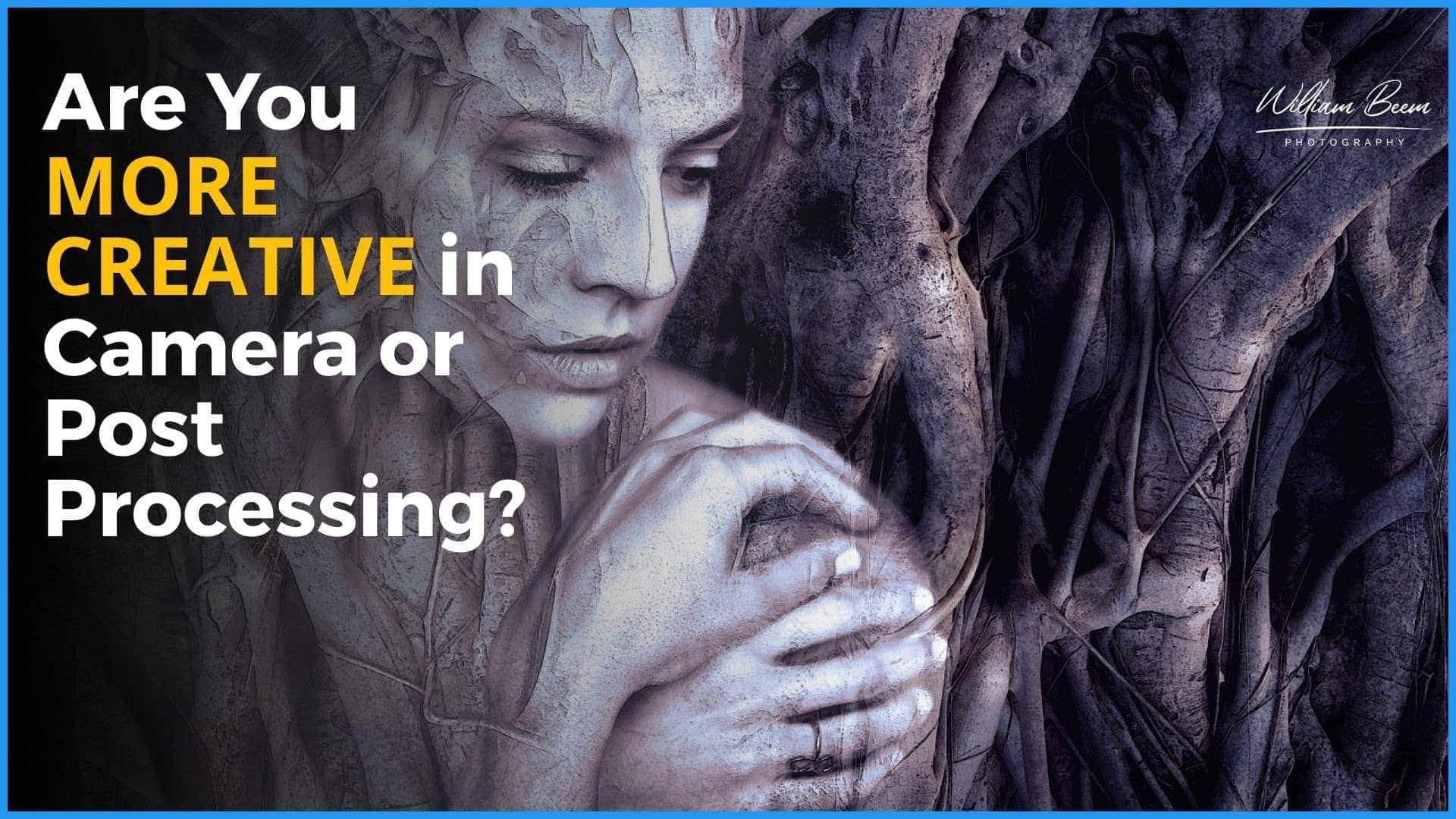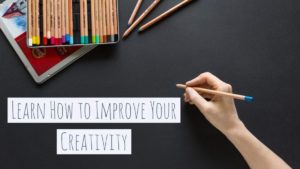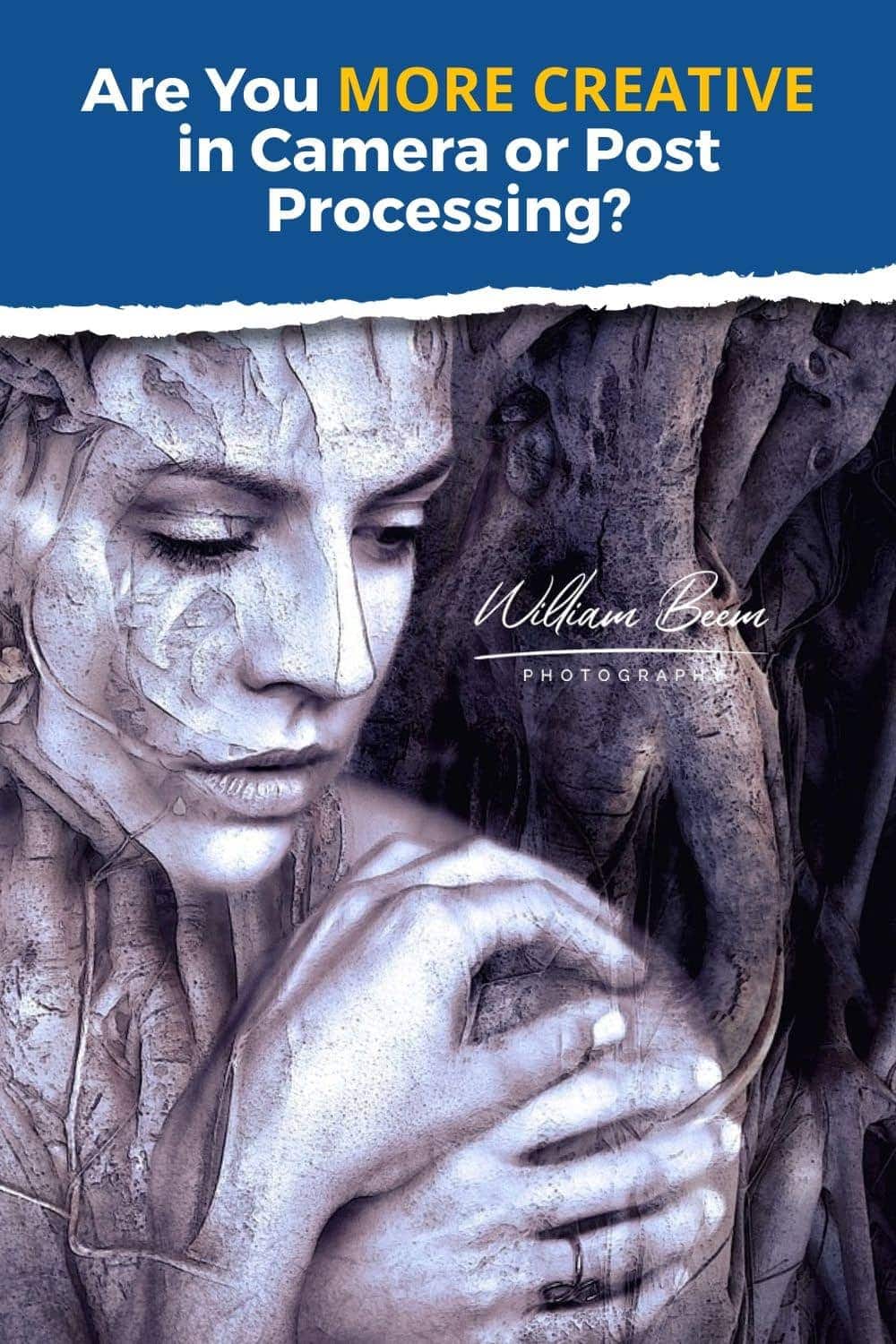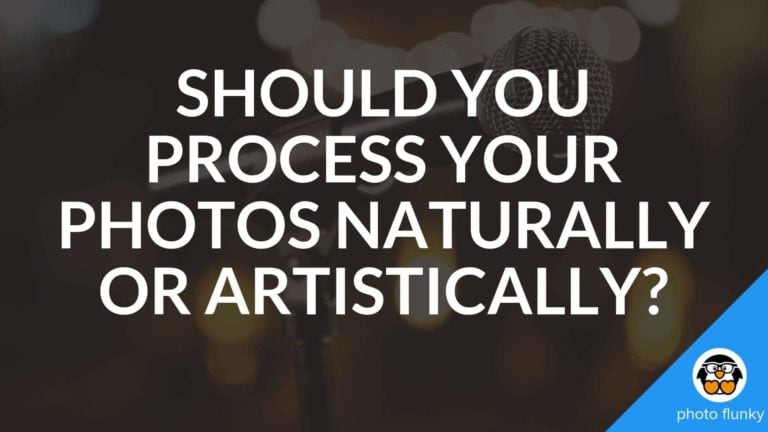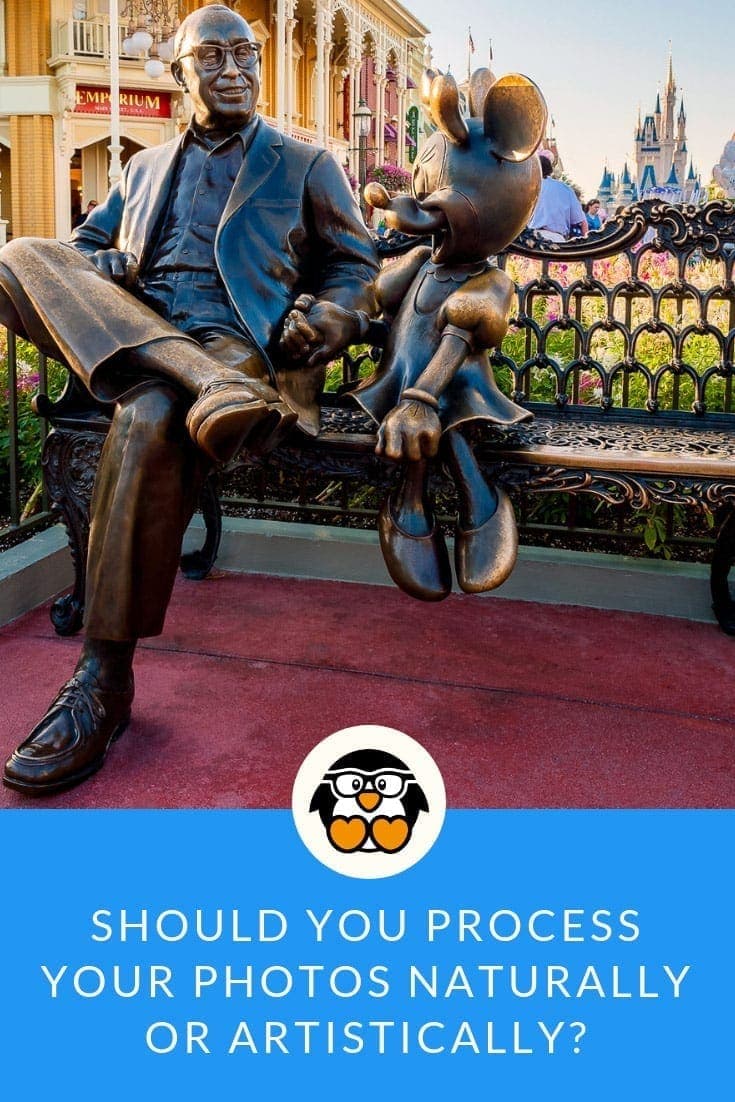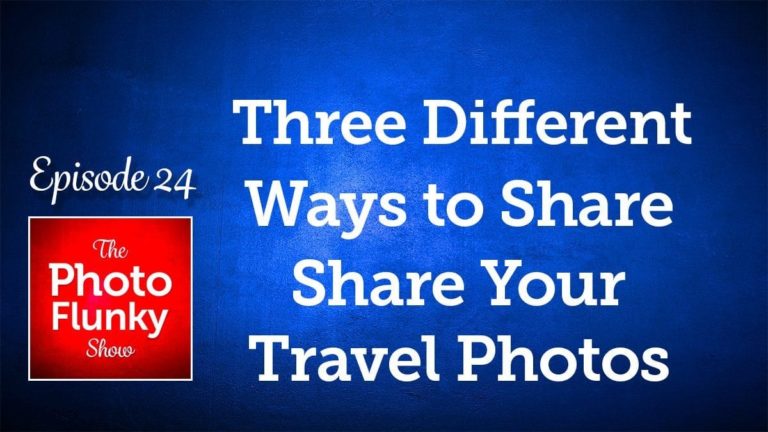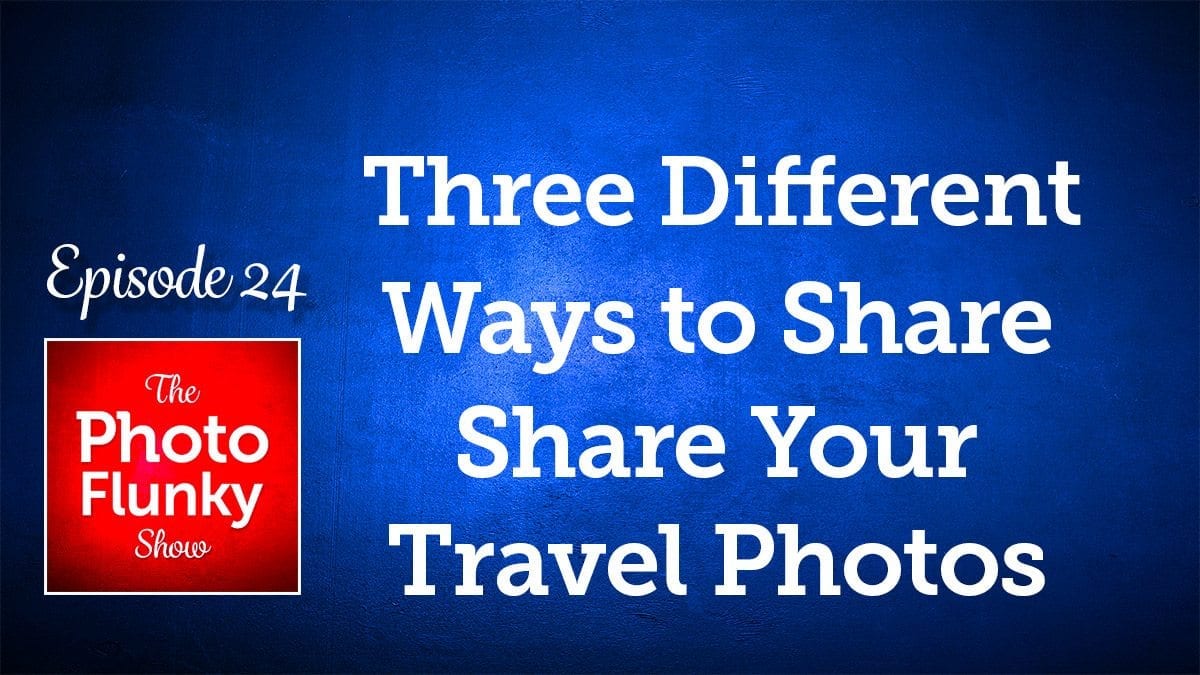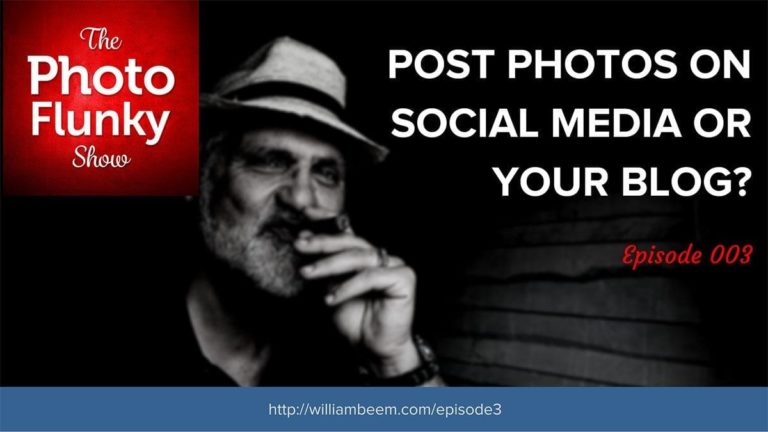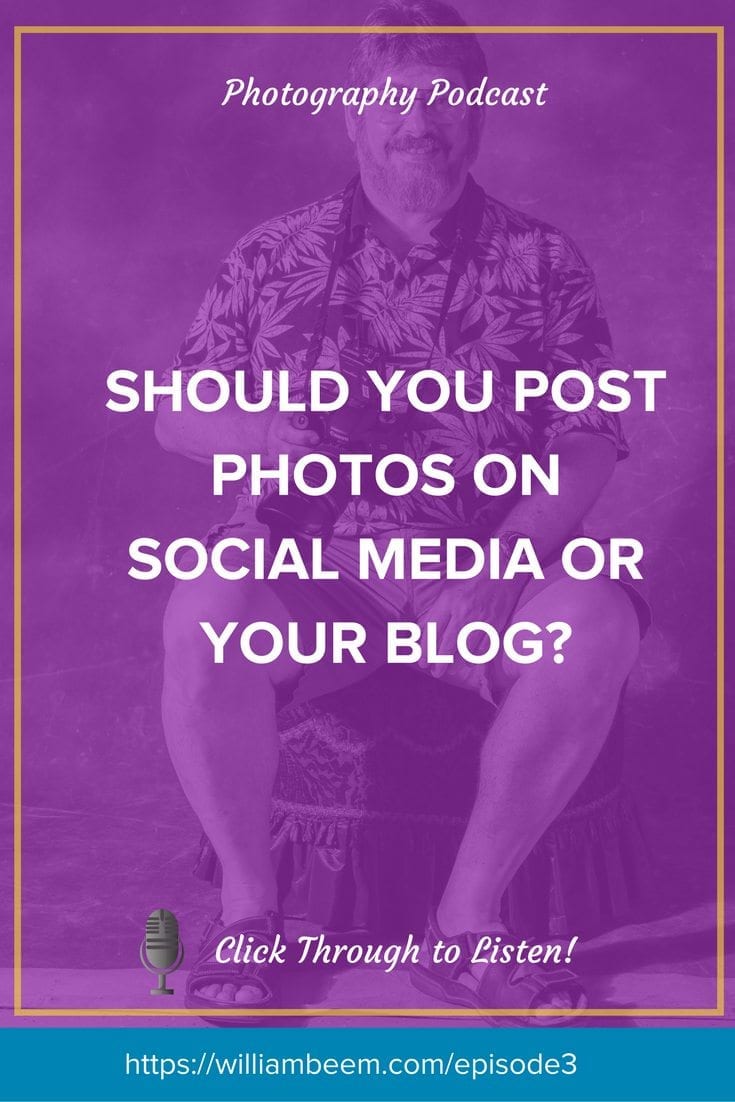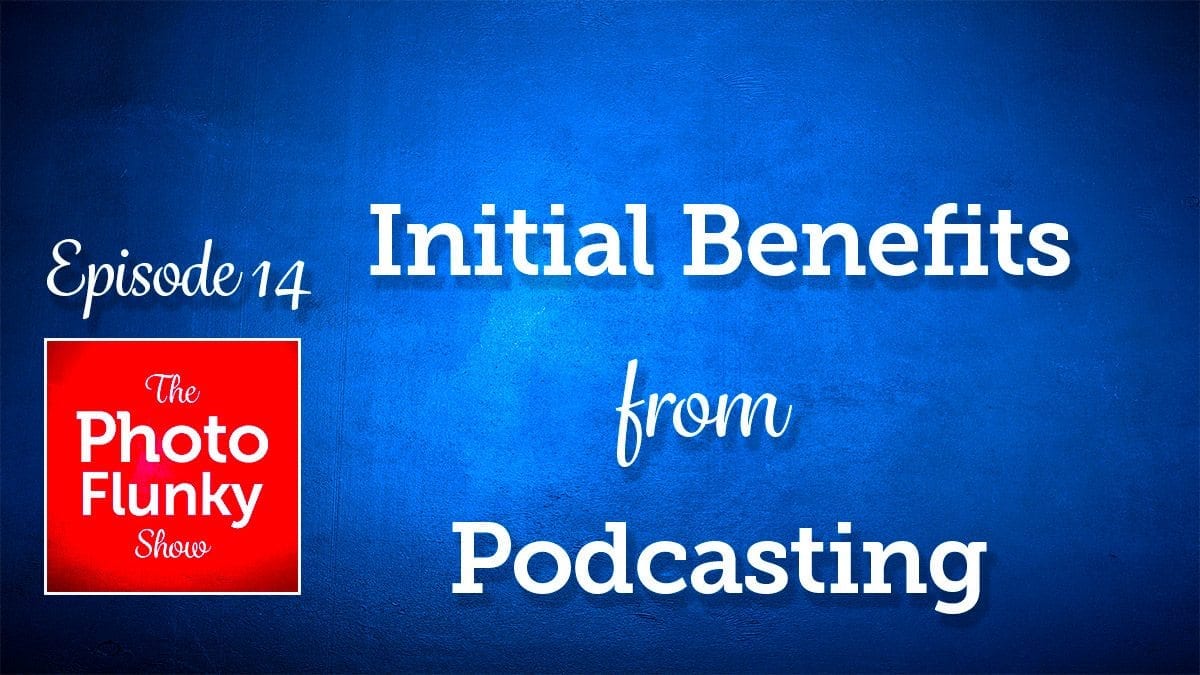Affiliate Disclosure: We earn a commission if you purchase through one of our links at no additional cost to you.
This episode is something we hope that’s thought provoking. Are you more creative in camera or in post processing?
The idea came from looking at a lot of photos, trying to determine how different photographers create their end result. In truth, we don’t care how you create your photos.
We either like the result or we don’t.
However, people tend to go in one direction or another.
Why Are You More Creative In Camera or in Post Processing?
Is there a natural proclivity to be a photographer or a digital artist? Perhaps so, but is that truly important?
We view photography as art, not documentation. That provides a lot of freedom to create what you want in the way you want to create it.
In other words, the result is more important than the process to get there.
Work with Your Strengths
Toward the end of the episode, I mentioned the Clifton Strengths Assessment that I took a few years ago. It wasn’t something one of my previous corporate overlords forced upon me, but something that I valued and paid for myself.
One of the benefits I derived from this assessment was knowing when a corporate overlord was pushing me into something that wouldn’t be a good fit, and then I knew why. Not that the corporate overlord cared. Then tend to think of all employees as mindless drones that they can mix and match without any regard to their personalities.
Yet, I digress.
There’s an interesting concept with the Clifton Strengths Assessment. People will perform better if they use their strengths to achieve greatness, rather than trying to raise their weaknesses up to mediocrity.
It’s a very enlightening concept and something that I think all photographers ought to consider.
Are you better at creating a practical scene or a digital scene? Is there a hybrid approach that makes more sense for your creative vision?
Understanding your strengths and enhancing them will yield better results than trying to do something that you just don’t feel like doing.
If you’re curious about me, here’s a list of my Top 5 Strengths from my Clifton Strengths Assessment.
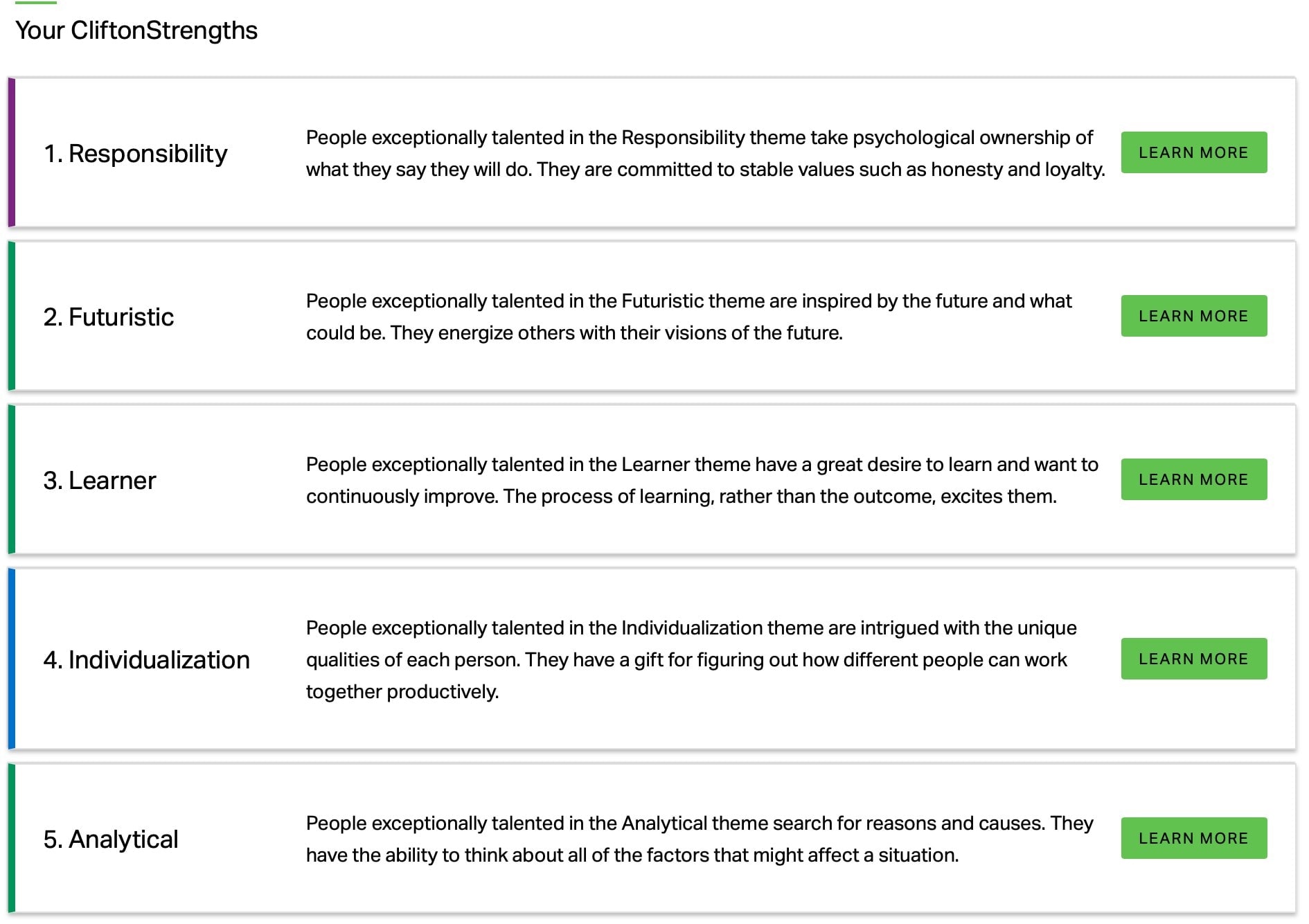
Practical Considerations
Is it better to have something perfectly created on camera, or to enhance it in post processing?
Sometimes it comes down to space. Do you have room to keep props, wardrobe or other set design elements?
If you photograph on-location, are you going to take elements with you or work with whatever is on the scene that day?
There’s a mild buzz on the Internet about whether it’s ethical to replace a sky in a photograph. I have no qualms about it at all. My purpose is to create something artistic, not document a particular day outdoors.
If the weather sucks or the sky is dull, I have no compunction about replacing that sky in post processing. Yet I would much prefer to be dazzled with a beautiful sky while I’m outside.
I just know that’s not always what you get.
In other cases, I’m limited by my own knowledge. Let’s take makeup and portrait photography as an example. I know enough that not all makeup looks good on camera. Sometimes the ingredients are reflective and it ruins the subject’s appearance when light from the flash creates a specular highlight.
If there is a good makeup artist on the set, they know which products work well with flash photography and can create the perfect result. I’ll take that approach every time if I have the luxury of a makeup artist.
On the other hand, I’ll just ask the model to use very basic makeup to avoid problems and specify that we’ll enhance the makeup in Photoshop later. That avoids the practical problem of specular highlight while we’re taking photos and shifts the creative burden to a later time in post processing.
It’s a secondary approach, but one that has the best results if we don’t have a professional MUA at hand during the session.
It’s Your Result that Matters
It’s good to have some time to reflect upon how you achieve your end result. As I like to say…
Start with the end in mind
William Beem
That’s the first time I’ve ever quoted myself, but I feel good about it.
Photography is not reality. A photo is two dimensional. It’s through our creative process that we trick the eye into believing something flat has depth to it.
If we can do that trick with our lenses and composition, why can’t we do the same thing with our digital tools? It really doesn’t matter to the viewer, as long as you do a good job in creating an acceptable illusion of reality.
Create a photo that evokes an emotion your audience will love. That’s the objective.
All right. Lee had an idea the other day, and this is really straightforward. The question is, are you more creative in camera or in post-processing? I don't think there's anything wrong with either approach, but that's what we're going to talk about today on I Like Your Picture. I'm William Beem. Welcome to I Like Your Picture. The show that helps you improve your photography with visual storytelling.
What is visual storytelling? It's a method of approaching your photography with a knowledge of who you're trying to serve with your photos and what emotion you want to make them feel. We encourage you to concentrate on your subject, light and background to create a photo your audience loves. I'm glad you found us. Hi, I'm William Beem. I'm Lee Beem. And today we're kind of wanting to explore the question of whether you're more creative in camera or in post-processing.
I don't think there is a wrong answer to this. I think it's more about your approach and your style, but mostly as long as you get a good result, I don't really care that much about how you got there. No, it doesn't really matter. You're looking at the end results, but I do think that people who are more technically capable and tend to lean towards more structure in the way that they think about or approach things actually have an upper hand in post-processing.
And this is just the thought that I had. I think we were having a conversation about it and people who are a little bit more kind of creatively scattered often do better when it comes to setting up their scene and, and crafting their photo prior to taking it. I always kind of encouraged people to get it right in camera. That doesn't mean that you're not more creative in post-processing,
but if you start off getting a good photograph in camera, you've got a lot of the work done for you. There are times when I've seen people who create these interesting storytelling photographs that rely heavily upon post-processing. And what I see them capture in camera is technically accurate. I mean the exposure is right. But it looks so boring and uninteresting, and then they take that and they turn it into something mystical or magical inside of Photoshop.
Whereas when you're taking your stuff, you want everything right then, right there. And all you're going to do is take it to Lightroom and maybe do some, a few adjustments, but your work is done in camera. For the most part. I'll spend an hour putting a photo together and taking shots and adjusting the composition or moving either the light. Well with me I don't usually move
a light source, but I might have to adjust the way that I've got things set up because of the lighting. I'll spend endless time with that. That really is my passion. To me, that is my picture. Once I've taken the photo, I'm not really interested in the post-processing. To me, it's more of a necessary evil, and it's not like a hate it,
but I'm not willing to spend time in post-processing, which means I'm not as good at it as other people are, but that's not where I'm spending my time. It's not where my strength is. And I just want to be able to get by with the post-processing. The people who are really good at post-processing almost, they'll take a photograph from almost anywhere. They might get it from a stock site.
They might take the photographs themselves. It depends upon how they feel about the work. Is it going to be all their work or do they not care about where the source material comes from? The assembly in compositing is really what they're looking at. So for example, I've seen people that'll do these fantasy kind of pictures, and there's a little girl and she's transformed into a fairy,
you know, with wings on her back. And maybe she's sitting inside of a lantern because she's so small. And I'm just kinda making this up of things. I've seen the past. You're not going to take that picture because you're not going to go find a giant lantern. And you don't have a little girl with wings on her back. You've got to assemble this piece by piece.
And not only are you looking at the physical components that you see in the picture, then there's the color grading. Are they going to change this to kind of a green overtone? Are they going to make it a winter overtone? Is it going to be warmth coming from the light? You know, if you're putting a little girl that looks like a fairy inside of a lantern,
hopefully it's because you think she's Tinkerbell and she's the one creating the glow. Well, this takes a high level of skill and understanding, and also creative ability. Because just like with setting up your scene prior to taking your photo, you've got to understand what's available to you. You've got to understand how to put it together. You've got to understand how it works.
And to me there's a little bit too much technical stuff. I'm just lazy with that. If I could rather be doing something creative, O when I say creative, something, I'm more, hands-on rather than sitting at a desk when it comes to my photos and things. But I also think that you're getting it right in camera is not the same as being creative in camera.
You can get your shot, right. And have it correct. Doesn't mean it's going to be a boring photo. When we brought up this discussion the other day in the kitchen, and I was just thinking everyone has different strengths. And to me, there was just a suddenly thought, there are two clear-cut types of people. It's like you say, it's not a right or wrong.
It's just, where's your strength and work to that. And don't let the other one frustrate you. I think you do want to get better at these things, but due to like I do, just, you know, with the stuff you don't care that much about enough to get by as good enough. You know, another example of something we brought up last week in our list of 10 common photography,
mistakes to avoid was looking at the colors, you know, do they work together or not? Some people will just make sure they color coordinate, maybe wardrobe or whatever styling they need to do. And everybody's wearing the right colors. They're in front of the right background. They take the picture and they're almost done. Someone else will say, don't worry,
I'll change that in Photoshop. Those are shorts are white. I need them to be the same color of orange as the soda that you're drinking. I can go ahead and change that. So everything matches. Now, when I see the photo, I don't know if the woman was wearing orange shorts to match the orange soda or not. And it turns out she wasn't because I saw a behind the scenes video,
but some people can do that. They'll say, I'll do all my color matching in post-processing. Whereas I would feel more comfortable if we could match things in the shot that you take in camera, but that's a lot of work for some people, and maybe they don't have access to wardrobe or colors or location where they get all, everything just right. So they do color grading and color changing inside of the Photoshop.
And also, I think if you had to change colors and post-processing, you've probably got a, be pretty clear on what you need and what you want to avoid when you're setting up in the camera. Like you're not going to have somebody in lime green if you want to change it over to red. That's not preferable. So there are going to be some guidelines and instructions.
So there is, you know, there's a level of expertise and knowledge that goes with that. And usually you want to take your photograph with a neutral color, like maybe a gray or something that's off white, something that you can easily transform to another color. An example that comes to mind as a lesson that I saw Joel Grimes doing, and he's doing still life photos,
basically. He will get, I think about a two by three piece of foam core. He'll wrap some gray paper around it, and then he'll put his subject on it and he'll shoot straight down. So for example, it might be a wrench or a tool of some kind. And if you look at that, okay, that's not really very interesting, but then he will apply textures and color and different things to make it look like a very rustic,
you know, still life photograph and because of the color and the texture that he, he really didn't have the resources to capture in camera. He was able to transform it into something in post-processing. That could be just a fine art piece of something to hang on your wall. Now, I would say that's an awesome skill to have, or to work on developing.
If you have a passion for the post-processing and you have limitations on, you know, maybe space or subjects, what do you call it? Things to make to kind of set up your photo. If you've limited with what's available to you? I think that's a great area to start, you know, seeing what you can do. I am just seriously lazy about that.
I've got a passion. I'll spend time, you know, setting up and putting the photo together and kind of working on it. I want to do that with my hands, because for me, once I click the shutter button and start taking my photos, I'm almost done. Whereas for you, you do craft your set, but you also spend a lot more time than I do with your post-processing.
You're also a lot more skilled in it. So for you, it's not an, Oh, well, this will take me five minutes and I'm good to post. When you start clicking that shutter you're maybe halfway there. Well, there are a couple of things I want to bring up about that. It shows a difference in our approach. You want to have interesting textures and colors and patterns in your still life photography. To achieve that,
you go shopping for things that are interesting, that you can, I can use this plate in one photo. I can use this piece of cloth and another photo. I've got all these flowers or, you know, different elements that go into your photograph. And you've got to have places to store those. And you'll reuse them in different, in different photographs.
If you're doing some other kind of photography, let's say that you need wardrobe. Imagine the size of the closet you need just to keep wardrobe for people, to take their photos. And, and it becomes a space issue. If you don't have the space to keep all that stuff. I know that there are some people who have a portrait photography studio,
and they've got a section where they've got furniture that they bring out and rotate in and around. They've got Apple boxes. They might have some backdrops. All sorts of things, so they can build a set and they have a practical photograph to take. That's fine. And it looks very good, but you got to have a space for the stuff. But people who are compositing need hard-drive space.
Yeah, no, I understand that completely. Look, my props are hidden in plain sight. I actually started buying decor and things for the accessories, for the house, looking at things that go with the house that will work with my photos. And obviously that echoes my taste and style with what I'm doing. It works out perfectly. That's obviously not possible for you cause you don't really want any dresses or skirts or high heels.
No, you'd probably look at me funny if I came home with some new high heels and said, look what I got, honey! For me? It's like, no, they're not for you. They're for some stranger, I'm going to meet later and put her in. Something else to keep in mind. And again, I like to go back to portrait photography
examples. If you want to take a portrait of somebody who's going to be wearing makeup, do you want to do that makeup and then take the portrait? Or do you want to do a portrait of somebody in very simple stuff and then apply makeup digitally? And there's pros and cons to each side. I think if you have makeup, you want to know how to apply that makeup.
So it's not reflective when you get your lights and stuff. So in other words, when you're taking the portrait, you don't want glare coming back. And then the type of products also have a bearing on that. Yeah. The type of product, if there's SPF in it. And a number of things that I really don't understand. Lee and our daughter understands that we've got makeup professionals that we've worked with in the past.
They understand that. And when they do their work, I like taking the photograph that way. If it's up to me, it was just like me and a female model. I'm going to say, put on foundation and concealer and don't put on anything else on your face. Because that way I can go back and digitally apply whatever I shade or lipstick or cheek color that I want.
Hmm. You'd have to let her know you're going to do that first, I think. A lot of models are probably, Well, it, it depends on, you know, what kind of relationship you have with the model. And if they know the purpose. Some of the models are doing things and they're not necessarily makeup experts either. They're good at preparing themselves to go out and look nice.
And I don't have any problem with that, but that doesn't necessarily mean the makeup they have is good for photography. Yeah, that's true. Or for the set that the kind of photo that you're planning on taking. When a model comes out, already made up and she's done it herself. And I'm thinking this doesn't work for what I want to do. Then it suddenly it's like the photo-shoot is,
is not gonna yield the result that I wanted or had in mind. And that's where communication is very important with the subject. You want to make sure they understand what the goal is that you're going to come out with. And as I repeat over and over again, start with the end in mind. If somebody shows up in the wrong thing, maybe you need something that shows some of their skin.
And they came over with thigh-high socks. That's going to leave lines on their legs. I've had that before. You know, some wardrobe leaves impressions on the body. Maybe you want to take photographs with that wardrobe, but you don't want to do that first because then if you have another wardrobe change and you've got these marks on someone's body and they say,
Oh, well, can't you get rid of that in Photoshop. And that will maybe after a couple of hours. And another thing to watch out for particularly now that the weather is changing pretty much everywhere coming into summertime. Everybody wants to get out into the sun tan lines. If you're planning on, you know, like a strapless dress or, you know,
something with an off the shoulder and you're doing models, just be aware of tan lines center. That was something I considered for our wedding because I had a strapless dress and I would not go, I'm a sun lover, but I would not go near the sun until after the wedding, because I did not want tan lines. These are just little things that you got to consider as like,
how are you going to create the result that you want? And it doesn't matter. I think if you're more creative in camera or in post-processing, but you've got to think about the result that you want before you start doing your photographs. And then that's how you get the result that you want. As I said before, if you're working with somebody else,
make sure you communicate with them what your vision is, what you're trying to get. They may surprise you with what options they have to bring to the table. You know, reminds me of an old line from General Patton in World War II. He says, when you want somebody to do something, tell them what you want, not how to do it.
They will amaze you as to how they get things done. And it's the same thing. If you're working with somebody else, you don't necessarily know everything they can do. They may surprise you and bring things to the table. That's one of the things I like about portrait photography is that if you get a group together with, you know, the photographer, the subjects,
the wardrobe and makeup artists, they're all going to have ideas and not a single one of them may have the best idea for the result until they get together and collaborate. That's true. Cause they turn things up for each other. I think it's just really important to understand your strengths instead of focusing on what you're not good at. I mean, by all means we want to grow and learn new things and skills.
That's great. I think it's important. But if you understand which area you're strongest in, that's probably where your passion is because let's face it. The things we love doing the most of the things were good at to at least a little bit better at doing. So I think understanding where your creative strengths are, will help when you're trying to decide where to spend the most time.
And that's a perfect place to end this because I want to bring up something with a Clifton strengths profile that I took a while back and what they do, they have, you answer some questions and then they show you where your strengths and your weaknesses and what they say is build up your strengths to greatness rather than trying to build up your weaknesses to mediocrity.
Yeah. I agree with that. Thank you so much for joining us on I Like Your Picture. This was episode 260. So show notes will be available at WilliamBeem.com/episode260. Hey, if you haven't subscribed yet, what's keeping you from it. Please go ahead. If you're listening to us, you can subscribe on the show notes page.
There's a player there. Click the little three dots. You can subscribe on iTunes or Google play. If you've got a different player that you're listening to, please go ahead. Subscribe there. We'd really appreciate it. Thanks so much. We'll see you again next week.
Related Links
